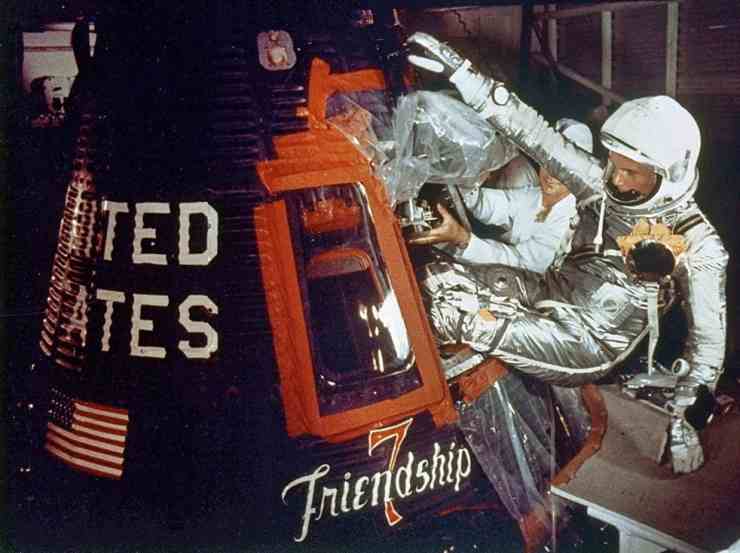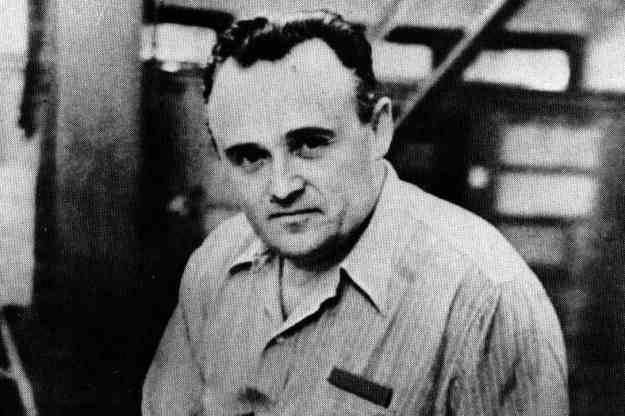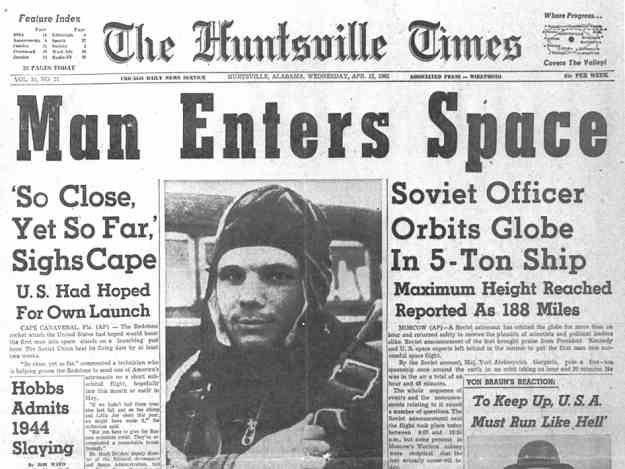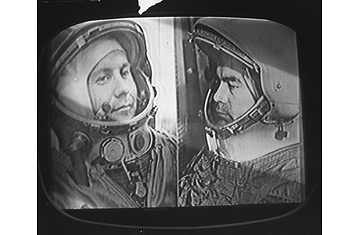Space race of the USSR and the USA
- Transfer
This is a translation of an article by John Glenn inspired the Soviets to push harder , which allows you to see the space race through the eyes of Americans.

John Glenn is the first American astronaut to fly on the Friendship 7 spaceship (officially named Mercury-Atlas 6) on February 20, 1962. This was necessary for America, as a response to the flight of Yuri Gagarin. Glenn instantly became a national hero, and the space race between the USSR and the USA, after a six-month lull, received a new impetus for development.
One of the rules of the Soviet space program was that any repetition of an already implemented space mission, such as the suborbital flights of Alan Shepard and Virgil "Gus" Grissom, is a waste of resources. The ideologist was Sergey Korolev, chief designer and mastermind of the USSR space program.

Not wanting to launch the next satellite, after Sputnik 1, he modified Sputnik 2 and launched the first astronaut - the dog Laika , less than a month later.
Korolev was also the first to understand the importance of the space program for Soviet propaganda. The government of the USSR was not impressed with the launch of the first satellite in 1957, but after a stormy reaction of the world community to this event, it revised its attitude. Nikita Khrushchev, First Secretary of the CPSU Central Committee, wished for the speedy launch of Sputnik 2.
Sergei Korolev's enthusiasm and support for the space program by the Soviet government led to the successful launch of Vostok 1, where Yuri Gagarin became the first person in space on April 12, 1961. As already mentioned, the main rule of Sergei Korolev was not to repeat the space missions that had already taken place. Therefore, the resources of the Vostok program were divided into two parts: the first half of the 18 spacecraft will be used for subsequent guided flights, and the second for unmanned research flights.
Four months after the flight of Yuri Gagarin, on August 6, 1961, a one-day flight (lasting 25 hours and 18 minutes) was completed by German Titov on the Vostok 2 spacecraft.

In the fall of 1961, NASA was still far from manned orbital flights, so the race in this direction from the USSR slowed down.
Sergey Korolev planned new flights. One of them is the opportunity for several astronauts on separately manned spacecraft to meet in space. The idea was proposed a month after Titov’s flight to Vostok 2. Three ships were to participate in the project, launched one after another, each of which had to spend at least one day in orbit. The project was eventually collapsed, because it was difficult to keep in touch with three spaceships at the same time. In the end, it was decided to use only two ships.
In October, the training of six astronauts began, they had to be ready for the mission in a month. But the Soviet leadership was more interested in launching Zenit unmanned satellites .
For flights under the Zenit program, the same equipment and the same launch sites were used as for the Vostok. There were problems in the ships, so the launch of both guided and unmanned spacecraft was delayed. While the USSR was solving technical problems, NASA managed to launch astronaut John Glenn into orbit.
The reaction of the media around the world to John Glenn’s flight prompted both sides to engage in space missions with renewed vigor. The emphasis again shifted towards controlled flights. On February 17, 1962, Sergey Korolev made statements that two Vostok ships would be launched in mid-March. However, these plans were not destined to be realized, because the main resources were still directed to the Zenith program.
The first Zenith was launched on April 26th. During the second, on June 1, an accident occurred that damaged the launch pad, which took several months to recover, which again delayed the flights of the Zeniths and Vostoks.

In August, the USSR was able to respond to John Glenn’s flight: Andriyan Nikolaev and Pavel Popovich’s flight took place, during which two spacecraft passed in close proximity to each other. During the flight, the first experiments on radio communications between two ships in space were carried out, scientific experiments were performed. The astronauts landed at a distance of 475 km from each other in Kazakhstan on August 15.
It was a landmark mission of Sergei Korolev, which allowed the Soviet Union to take the initiative in the space race again. Perhaps everything would have been different if John Glenn had not flown.

John Glenn is the first American astronaut to fly on the Friendship 7 spaceship (officially named Mercury-Atlas 6) on February 20, 1962. This was necessary for America, as a response to the flight of Yuri Gagarin. Glenn instantly became a national hero, and the space race between the USSR and the USA, after a six-month lull, received a new impetus for development.
USSR space program
One of the rules of the Soviet space program was that any repetition of an already implemented space mission, such as the suborbital flights of Alan Shepard and Virgil "Gus" Grissom, is a waste of resources. The ideologist was Sergey Korolev, chief designer and mastermind of the USSR space program.

Not wanting to launch the next satellite, after Sputnik 1, he modified Sputnik 2 and launched the first astronaut - the dog Laika , less than a month later.
Korolev was also the first to understand the importance of the space program for Soviet propaganda. The government of the USSR was not impressed with the launch of the first satellite in 1957, but after a stormy reaction of the world community to this event, it revised its attitude. Nikita Khrushchev, First Secretary of the CPSU Central Committee, wished for the speedy launch of Sputnik 2.
Sergei Korolev's enthusiasm and support for the space program by the Soviet government led to the successful launch of Vostok 1, where Yuri Gagarin became the first person in space on April 12, 1961. As already mentioned, the main rule of Sergei Korolev was not to repeat the space missions that had already taken place. Therefore, the resources of the Vostok program were divided into two parts: the first half of the 18 spacecraft will be used for subsequent guided flights, and the second for unmanned research flights.
Four months after the flight of Yuri Gagarin, on August 6, 1961, a one-day flight (lasting 25 hours and 18 minutes) was completed by German Titov on the Vostok 2 spacecraft.

Silence in manned flights
In the fall of 1961, NASA was still far from manned orbital flights, so the race in this direction from the USSR slowed down.
Sergey Korolev planned new flights. One of them is the opportunity for several astronauts on separately manned spacecraft to meet in space. The idea was proposed a month after Titov’s flight to Vostok 2. Three ships were to participate in the project, launched one after another, each of which had to spend at least one day in orbit. The project was eventually collapsed, because it was difficult to keep in touch with three spaceships at the same time. In the end, it was decided to use only two ships.
In October, the training of six astronauts began, they had to be ready for the mission in a month. But the Soviet leadership was more interested in launching Zenit unmanned satellites .
For flights under the Zenit program, the same equipment and the same launch sites were used as for the Vostok. There were problems in the ships, so the launch of both guided and unmanned spacecraft was delayed. While the USSR was solving technical problems, NASA managed to launch astronaut John Glenn into orbit.
Resumption of the race
The reaction of the media around the world to John Glenn’s flight prompted both sides to engage in space missions with renewed vigor. The emphasis again shifted towards controlled flights. On February 17, 1962, Sergey Korolev made statements that two Vostok ships would be launched in mid-March. However, these plans were not destined to be realized, because the main resources were still directed to the Zenith program.
The first Zenith was launched on April 26th. During the second, on June 1, an accident occurred that damaged the launch pad, which took several months to recover, which again delayed the flights of the Zeniths and Vostoks.

In August, the USSR was able to respond to John Glenn’s flight: Andriyan Nikolaev and Pavel Popovich’s flight took place, during which two spacecraft passed in close proximity to each other. During the flight, the first experiments on radio communications between two ships in space were carried out, scientific experiments were performed. The astronauts landed at a distance of 475 km from each other in Kazakhstan on August 15.
It was a landmark mission of Sergei Korolev, which allowed the Soviet Union to take the initiative in the space race again. Perhaps everything would have been different if John Glenn had not flown.
